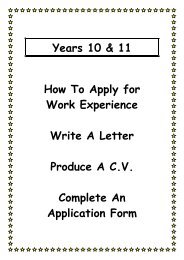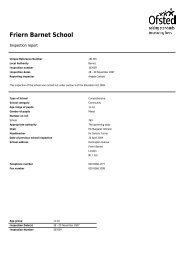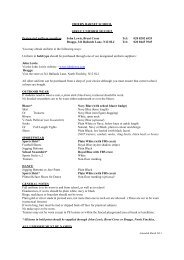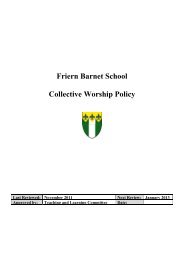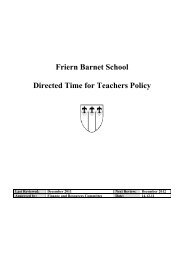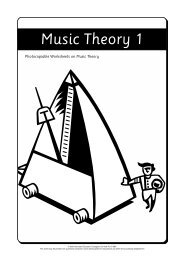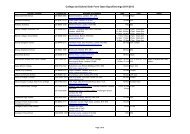VOL 166 Music Theory 2 - Friern Barnet School
VOL 166 Music Theory 2 - Friern Barnet School
VOL 166 Music Theory 2 - Friern Barnet School
You also want an ePaper? Increase the reach of your titles
YUMPU automatically turns print PDFs into web optimized ePapers that Google loves.
Name: ____________________ <strong>Music</strong> <strong>Theory</strong> 2 Worksheet<br />
METRONOME MARKINGS & TEMPO INDICATIONS<br />
The metronome was invented by a man named Maelzel who lived from 1772-1838. It was<br />
designed to ensure that strict time was kept when playing a piece of music. Early metronomes<br />
were wound up and then ticked like a clock at a steady beat set by moving a sliding bar up and<br />
down. When you see a metronome marking it is usually written like this: M.M. q = 60.<br />
This<br />
means that there are 60 crotchet beats in one minute. This would be equal to one crotchet<br />
every second. The M.M. stands for Maelzel’s Metronome.<br />
Today metronomes come in all shapes and sizes but the basic principal is the same. Using a<br />
metronome when practising can be a useful method of making sure that you keep accurate<br />
time. Equally, if you are composing, adding a metronome marking can help to ensure that the<br />
music is performed at the correct speed, as it is more precise than simply writing adagio,<br />
andante, allegro etc.<br />
The beat indicated by a metronome does not have to be a crotchet. Sometimes you may wish<br />
to indicate the beat of minims or quavers. These would follow exactly the same format but the<br />
crotchet would be replaced by the note value you want to use. Below are two examples.<br />
M.M. e = 44 M.M. h = 56<br />
44 quavers in one minute 56 minims in one minute<br />
The number of beats per minute roughly correspond to the different musical terms as shown<br />
in the table.<br />
Work out the musical term that corresponds<br />
largo<br />
q = 40 - 60 to each tempo indication.<br />
larghetto<br />
lento<br />
adagio<br />
andante<br />
andantino<br />
moderato<br />
allegretto<br />
allegro<br />
presto<br />
prestissimo<br />
q<br />
q<br />
q<br />
q<br />
q<br />
q<br />
q<br />
q<br />
q<br />
q<br />
= 60 - 66<br />
= 66 -70<br />
= 70 - 76<br />
= 76 - 90<br />
= 90 - 108<br />
=108 - 116<br />
= 116 - 125<br />
= 125 - 168<br />
= 168 - 200<br />
= 200 - 208<br />
M.M. q = 64<br />
M.M. q = 120<br />
M.M. q = 144<br />
M.M. q = 86<br />
M.M. q = 132<br />
M.M. q = 100<br />
www.keynoteseducation.com © 2004 Keynotes Education Crossgate Cornwall PL15 9SX<br />
This sheet may be printed from a personal computer and/or photocopied for educational use within the purchasing establishment<br />
10




